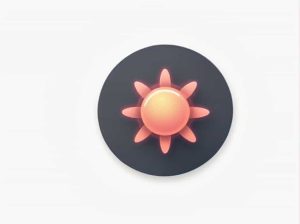Everything in the world can be classified as living or nonliving. Living things like humans animals and plants exhibit characteristics such as growth reproduction and movement. Nonliving things such as rocks water and air do not have these abilities.
Understanding the difference between living and nonliving things helps us appreciate the natural world and how various elements interact. This topic explores the key characteristics examples and differences between these two categories.
What Are Living Things?
Living things are organisms that have the ability to grow reproduce and respond to their environment. They require energy to survive and exhibit various life processes.
Characteristics of Living Things
-
Growth and Development
- Living things increase in size over time.
- Plants grow from seeds into trees and animals grow from infants into adults.
-
Reproduction
- All living things reproduce to continue their species.
- Reproduction can be sexual (involving two parents) or asexual (involving one parent).
-
Metabolism (Energy Use)
- Living things require energy to perform activities such as movement and digestion.
- Plants obtain energy from sunlight (photosynthesis) while animals get energy from food.
-
Response to Stimuli
- Living organisms react to changes in their environment.
- For example humans shiver in the cold and plants grow toward sunlight.
-
Movement
- While some living things move actively (like animals) others show slow movements (like plants growing toward light).
-
Cellular Structure
- All living things are made up of cells the basic units of life.
- Some organisms like bacteria are single-celled while others like humans are multicellular.
-
Adaptation and Evolution
- Over time living organisms develop adaptations to survive in their environment.
- Evolution ensures species improve their survival chances over generations.
Examples of Living Things
- Humans – Complex organisms with advanced intelligence and emotions.
- Animals – From tiny insects to large mammals all animals exhibit movement and reproduction.
- Plants – Produce oxygen grow from seeds and perform photosynthesis.
- Microorganisms – Bacteria and fungi are tiny living organisms that impact ecosystems.
What Are Nonliving Things?
Nonliving things are objects or substances that do not have the characteristics of life. They do not grow reproduce or respond to stimuli.
Characteristics of Nonliving Things
-
No Growth
- A rock remains the same size unless broken.
- Water does not grow but can change form (solid liquid gas).
-
No Reproduction
- Nonliving things cannot produce offspring.
- A piece of metal does not multiply or replicate on its own.
-
No Metabolism or Energy Use
- Nonliving objects do not require food or water.
- A car needs fuel to run but it does not convert energy like a living being.
-
No Response to Stimuli
- Nonliving things do not react to their environment.
- A table will not move if someone shines a light on it.
-
No Movement on Their Own
- While objects can be moved by external forces they do not move independently.
-
No Cells or Life Processes
- Nonliving things are made of matter but do not contain cells or DNA.
Examples of Nonliving Things
- Natural Nonliving Things – Rocks water air sunlight and sand.
- Man-Made Nonliving Things – Cars buildings furniture and electronic devices.
Key Differences Between Living and Nonliving Things
| Feature | Living Things | Nonliving Things |
|---|---|---|
| Growth | Grow and develop over time | Do not grow or develop |
| Reproduction | Can reproduce offspring | Cannot reproduce |
| Energy Use | Require food and energy | Do not require energy |
| Response to Stimuli | React to their environment | Do not react to stimuli |
| Movement | Can move actively or grow | Cannot move on their own |
| Cell Structure | Made of cells | No cellular structure |
| Adaptation | Can evolve and adapt | Do not evolve or adapt |
Special Cases: Is It Living or Nonliving?
Some things may seem to blur the line between living and nonliving.
-
Viruses
- Viruses have genetic material but cannot reproduce without a host.
- Scientists debate whether they should be classified as living or nonliving.
-
Fire
- Fire moves grows and consumes energy but it is not made of cells.
- It is considered a chemical reaction rather than a living organism.
-
Seeds and Dormant Life Forms
- Seeds do not appear to be alive until they germinate.
- Dormant bacteria can survive in extreme conditions but reactivate under the right environment.
Why Understanding This Difference Matters
Recognizing the distinction between living and nonliving things is essential in various fields:
- Biology & Medicine – Helps in studying life sciences and developing treatments.
- Ecology – Understanding how living things interact with their environment.
- Education – Basic knowledge for science students.
Living and nonliving things play different roles in the world. While living organisms grow reproduce and respond to stimuli nonliving things remain unchanged unless acted upon by external forces. Understanding these differences helps us appreciate life and the surrounding environment.



